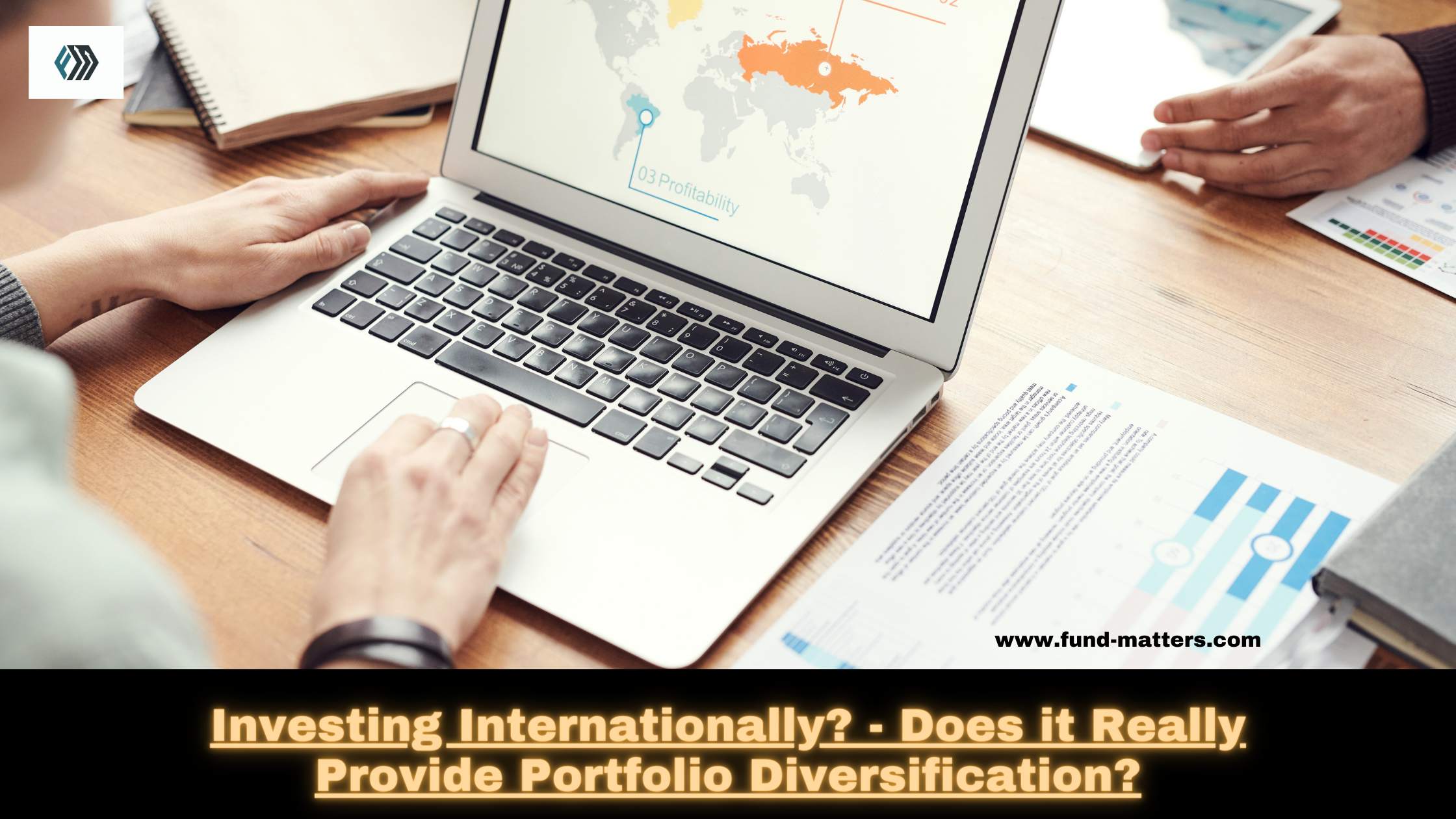Investing Internationally? – Does it Really Provide Portfolio Diversification?
Fund-Matters | June 24, 2023 | International Investments, Investing, Investment, Investment Options, Investor, | 0 Comments

International Portfolio:
An international portfolio is a selection of stocks and other assets that focuses on foreign markets rather than domestic ones.
An international portfolio appeals to investors who want to diversify their assets by moving away from a domestic-only portfolio. This type of portfolio can carry increased risks due to potential economic and political instability in some emerging markets. There also is the risk that a foreign market’s currency may slip in value.
The worst of these risks can be reduced by offsetting riskier emerging-market stocks with investments in industrialized and mature foreign markets. Or, the risks can be offset by investing in the stocks of American companies that are showing their best growth in markets abroad.
The most cost-effective way for investors to hold an international portfolio is to buy an exchange-traded fund (ETF) that focuses on foreign equities.
Advantages of an International Portfolio:
International portfolios give you more diversification, let you access liquidity in other markets, and can help you reduce the risks of the domestic market you invest in the most.
-
May Reduce Risk:
An international portfolio can be used to reduce investment risk. If the domestic country stocks underperform, gains in the investor’s international holdings can smooth out returns. For example, an investor may split a portfolio evenly between foreign and domestic holdings. The domestic portfolio may decline by 10%, while the international portfolio could advance 20%, leaving the investor with an overall net return of 10%. Risk can be reduced further by holding a selection of stocks from developed and emerging markets in the international portfolio.
-
Diversifies Currency Exposure:
When investors buy stocks for an international portfolio, they are also effectively buying the currencies in which the stocks are quoted. For example, if an investor purchases a stock listed on the London Stock Exchange, the value of that stock may rise and fall with the British pound. If the domestic currency falls, the investor’s international portfolio helps to neutralize the currency fluctuations.
-
Market Cycle Timing:
An investor with an international portfolio can take advantage of the market cycles of different nations. For instance, an investor may believe U.S. stocks and the U.S. dollar are overvalued and may look for investment opportunities in developing regions, such as Asia, that are believed to benefit from capital inflow and demand for commodities.
Does an International Portfolio provide portfolio diversification?
Diversification is a risk management strategy that mixes a wide variety of investments within a portfolio. Diversification is most often done by investing in different asset classes such as stocks, bonds, real estate, or cryptocurrency. Diversification can also be achieved by buying investments in different countries. An international portfolio appeals to investors who want to diversify their assets by moving away from a domestic-only portfolio. An international portfolio may also appeal to the investors who want some exposure to the stocks of foreign economies growing faster than the domestic country.
International diversification is a risk management technique that aims to reduce volatility by spreading the risk across multiple geographical regions. This means not only investing in securities of companies that operate in different sectors and differ in size and style, but also allocating assets across different locations and countries. These countries would typically show a low correlation and react differently to market and economic events. This is designed to reduce the volatility of the portfolio’s returns over the long-term.



